Efficient Hogel-Based Hologram Synthesis Method for Holographic Stereogram Printing
Abstract
1. Introduction
2. Method
2.1. Acquisition of Perspective Images
2.2. Hogel Generation and Enhancement of Angular Resolution by the Pixel Re-Arrangement Algorithm
3. Results
3.1. Numerical Simulation
3.2. Optical Experiment
4. Conclusions
Author Contributions
Funding
Conflicts of Interest
References
- Kim, N.; Anh, P.H.; Erdenebat, M.; Alam, M.A.; Kwon, K.-C.; Piao, M.-L.; Lee, J.-H. 3D Dsiplay Technology. Disp. Imaging 2013, 1, 73–95. [Google Scholar]
- Kim, N.; Alam, M.A.; Bang, L.T.; Phan, A.-H.; Piao, M.-L.; Erdenebat, M. Advances in the light field displays based on integral imaging and holographic techniques. Chin. Opt. Lett 2014, 12, 060005. [Google Scholar] [CrossRef]
- Erdenebat, M.; Lim, Y.-T.; Kwon, K.-C.; Darkhanbaatar, N.; Kim, N. Waveguide-type Head-Mounted Display System for AR application. In State of the Art Virtual Reality and Augmented Reality Knowhow; Mohamudally, N., Ed.; IntechOpen: London, UK, 2018. [Google Scholar]
- Kim, Y.; Stoykova, E.; Kang, H.; Hong, S.; Park, J.; Park, J.; Hong, J. Seamless full color holographic printing method based on spatial partitioning of SLM. Opt. Express 2015, 23, 172–182. [Google Scholar] [CrossRef] [PubMed]
- Hong, S.; Stoykova, E.; Kang, H.; Kim, Y.; Hong, J.; Park, J.; Park, K. Image-Quality Enhancement for a Holographic Wavefront Color Printer by Adaptive SLM Partitioning. J. Opt. Soc. Korea 2015, 19, 29–37. [Google Scholar] [CrossRef][Green Version]
- Kang, H.; Stoykova, E.; Kim, Y.; Hong, J.; Park, J.; Hong, J. Color wavefront printer with mosaic delivery of primary colors. Opt. Commun. 2015, 350, 47–55. [Google Scholar] [CrossRef]
- Kang, H.; Stoykova, E.; Kim, Y.; Hong, J.; Park, J.; Hong, J. Color Holographic Wavefront Printing Technique for Realistic Representation. IEEE Trans. Ind. Inform. 2016, 12, 1590–1598. [Google Scholar] [CrossRef]
- Yoshikawa, H.; Yamaguchi, T. Review of Holographic Printers for Computer-Generated Holograms. IEEE Trans. Ind. Inform. 2016, 12, 1584–1589. [Google Scholar] [CrossRef]
- Yamaguchi, T.; Miyamoto, O.; Yoshikawa, H. Volume hologram printer to record the wavefront of three-dimensional objects. Opt. Eng. 2012, 51, 075802. [Google Scholar] [CrossRef]
- Hong, K.; Park, S.; Yeom, J.; Kim, J.; Chen, N.; Pyun, K.; Choi, C.; Kim, S.; An, J.; Lee, H.-S.; et al. Resolution enhancement of holographic printer using a hogel overlapping method. Opt. Express 2013, 21, 14047–14055. [Google Scholar] [CrossRef] [PubMed]
- Su, J.; Yuan, Q.; Huang, Y.; Jiang, X.; Yan, X. Method of single step full parallax synthetic holographic stereogram printing based on effective perspective images’ segmentation and mosaicking. Opt. Express 2017, 25, 23523–23544. [Google Scholar] [CrossRef] [PubMed]
- Dashdavaa, E.; Khuderchuluun, A.; Shin, C.-W.; Lim, Y.-T.; Kim, N. Holographic stereogram printer for computer-generated holograms. In Optics, Photonics, and Digital Technologies for Imaging Applications V, Proceedings of the SPIE 10679 Photonics Europe, Strasbourg, France, 25 April 2018; Schelkens, P., Ebrahami, T., Cristobal, G., Eds.; SPIE: Strasbourg, France, 2018; Volume (X)DCLXXIX. [Google Scholar]
- Dashdavaa, E.; Khuderchuluun, A.; Lim, Y.-T.; Jeon, S.-H.; Kim, N. Holographic stereogram printing based on digitally designed content generation platform. In Practical Holography XXXIII: Displays, Materials, and Applications, Proceedings of the SPIE OPTO, San Francisco, CA, USA, 2–7 February 2019; Bjelkhagen, H.I., Bove, V.M., Eds.; SPIE: San Francisco, CA, USA, 2019; Volume (X)CMXLIV. [Google Scholar]
- Sanchez, A.M.; Prieto, D.V. Design, development and implementation of a low-cost full parallax holoprinter. In Practical Holography XXXII: Displays, Materials, and Applications, Proceedings of the SPIE OPTO, San Francisco, CA, USA, 19 February 2018; Bjelkhagen, H.I., Bove, V.M., Eds.; SPIE: San Francisco, CA, USA, 2018; Volume CVDLXXX. [Google Scholar]
- Bjelkhagen, H.; Brotherton-Ratcliffe, D. Ultra-Realistic Imaging: Advanced Techniques in Analog and Digital Colour Holography, 1st ed.; CRC Press: Boca Raton, FL, USA, 2013. [Google Scholar]
- Pei, C.; Yan, X.-P.; Jiang, X. Computer-generated phase-modulated full parallax holographic stereograms without conjugate images. Opt. Eng. 2014, 53, 103105. [Google Scholar] [CrossRef]
- Goncharsky, A.; Goncharsky, A.; Durlevich, S. High-resolution full-parallax computer-generated holographic stereogram created by e-beam technology. Opt. Eng. 2017, 56, 063105. [Google Scholar] [CrossRef]
- Blanche, P.-A.J.; Bigler, C.M.; Ka, J.-W.; Peyghambarian, N.N. Fast and continuous recording of refreshable holographic stereograms. Opt. Eng. 2018, 57, 061608. [Google Scholar] [CrossRef]
- Park, J.-H.; Askari, M. Non-hogel-based computer-generated hologram from light field using complex field recovery technique from Wigner distribution function. Opt. Express 2019, 27, 2562–2574. [Google Scholar] [CrossRef] [PubMed]
- Fan, F.; Jiang, X.; Yang, X.; Wen, J.; Chen, S.; Zhang, T.; Han, C. Holographic Element-Based Effective Perspective Image Segmentation and Mosaicking Holographic Stereogram Printing. Appl. Sci. 2019, 9, 920. [Google Scholar] [CrossRef]
- Su, J.; Yan, X.; Huang, Y.; Jiang, X.; Chen, Y.; Zhang, T. Progress in the Synthetic Holographic Stereogram Printing Technique. Appl. Sci. 2018, 8, 851. [Google Scholar] [CrossRef]
- Shi, L.; Huang, F.-C.; Lopes, W.; Matusik, W.; Luebke, D. Near-eye light field holographic rendering with spherical waves for wide field of view interactive 3D computer graphics. ACM Trans. Graph. 2017, 36, 1–17. [Google Scholar] [CrossRef]
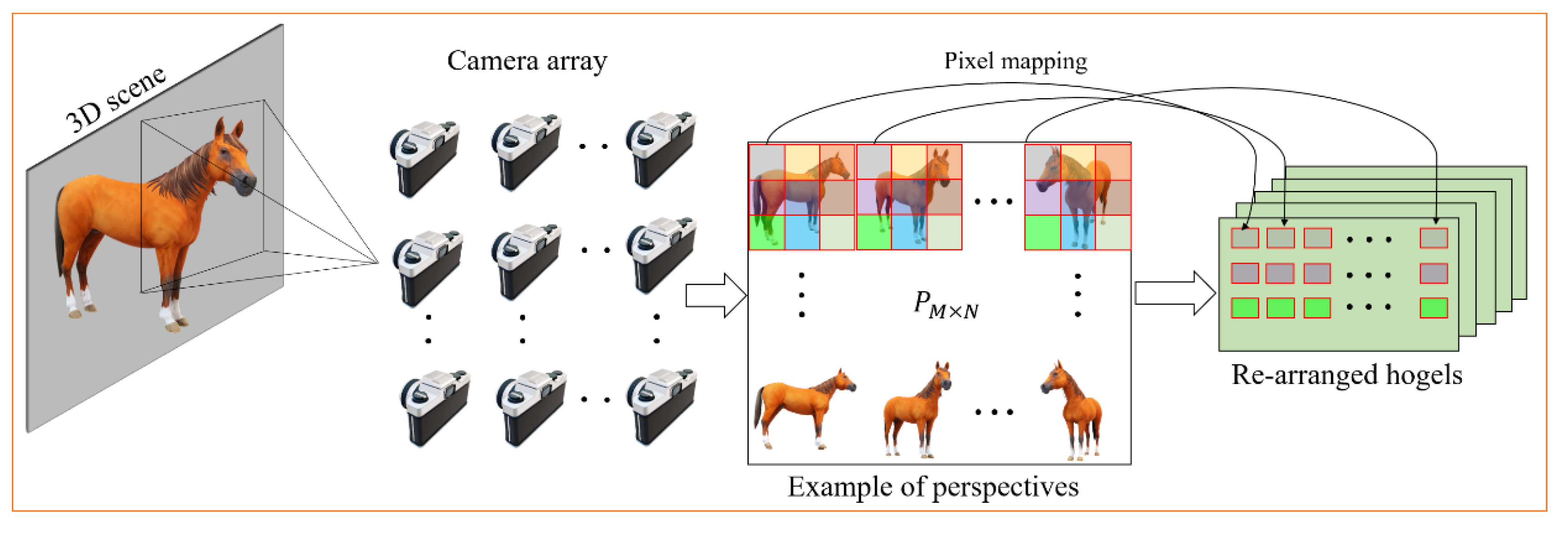
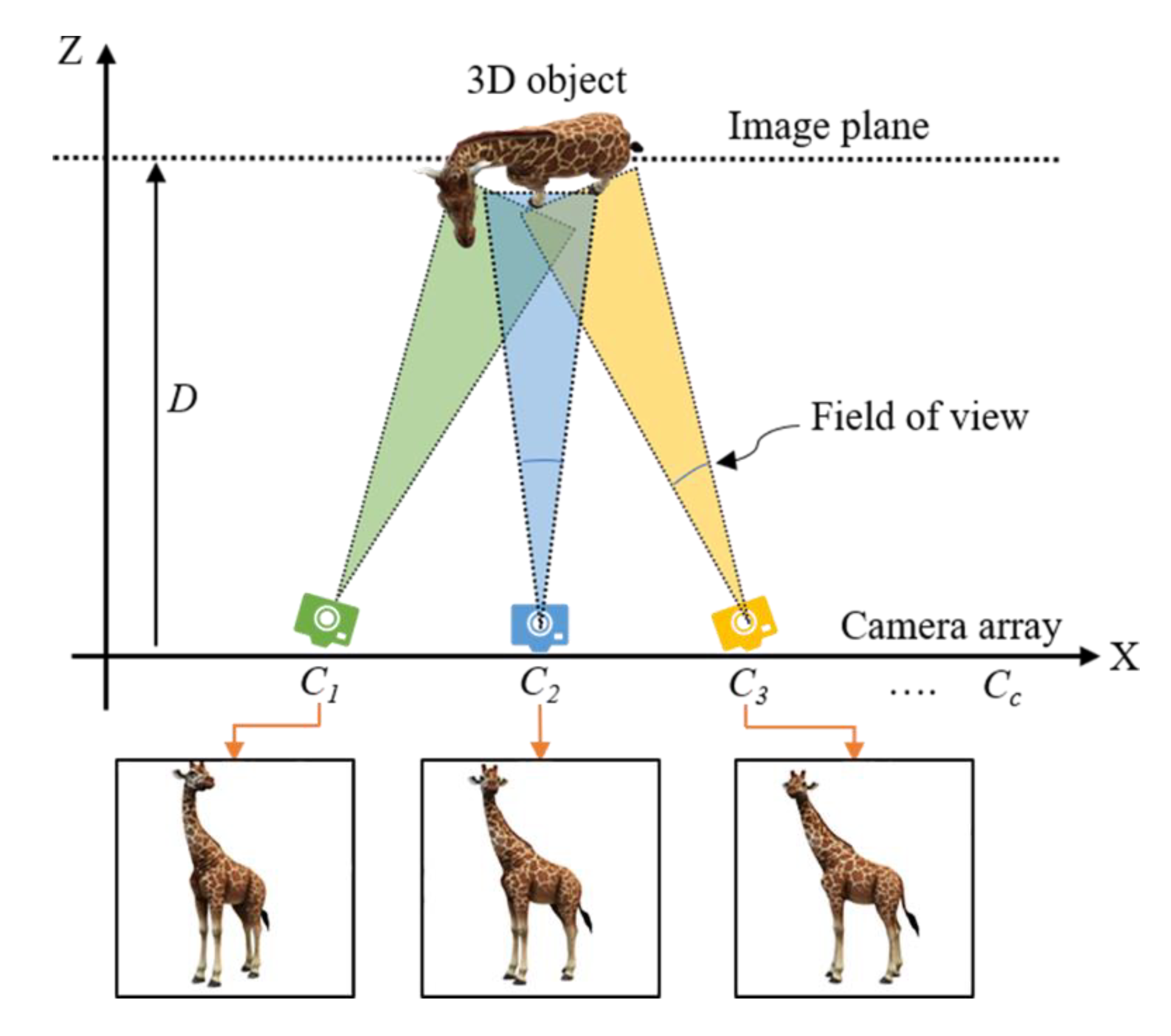
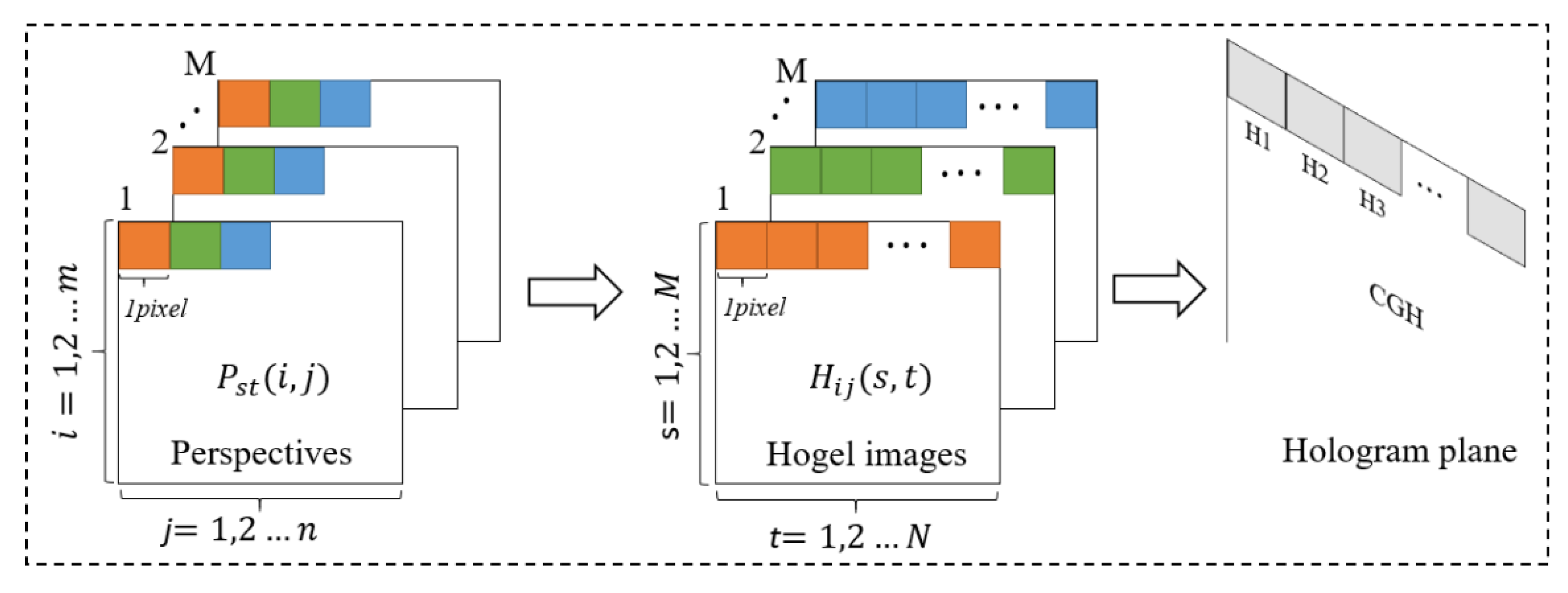



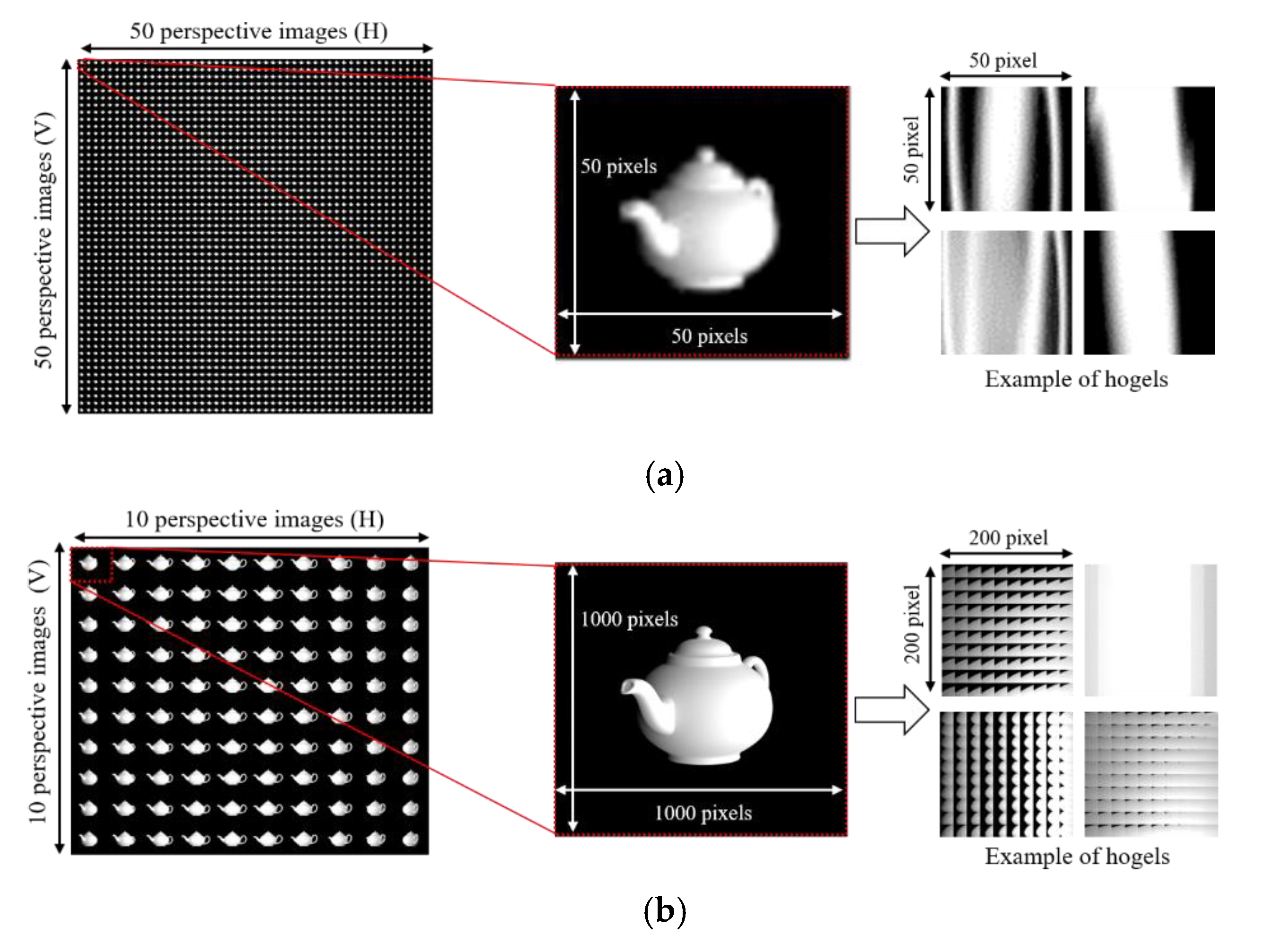
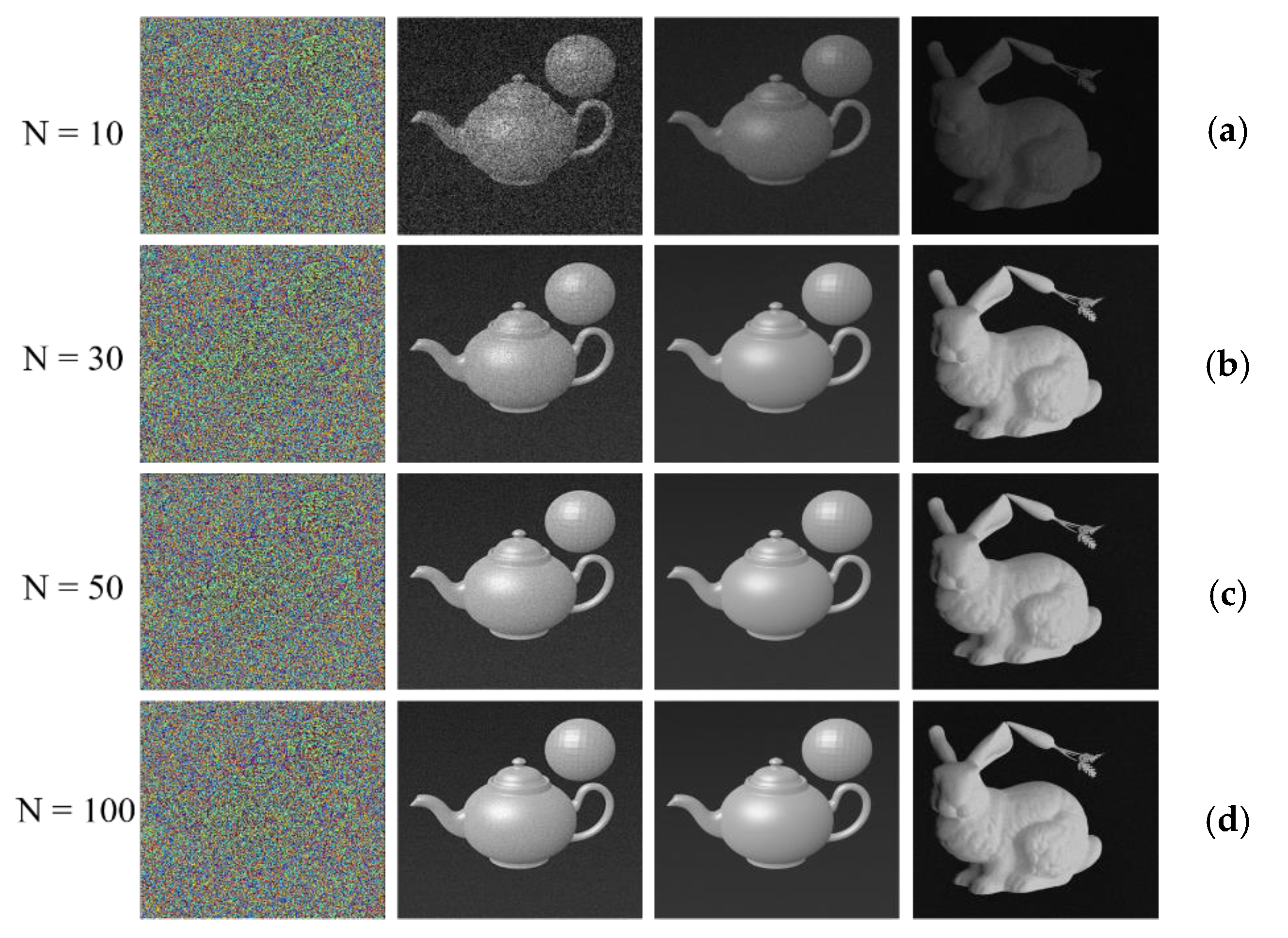
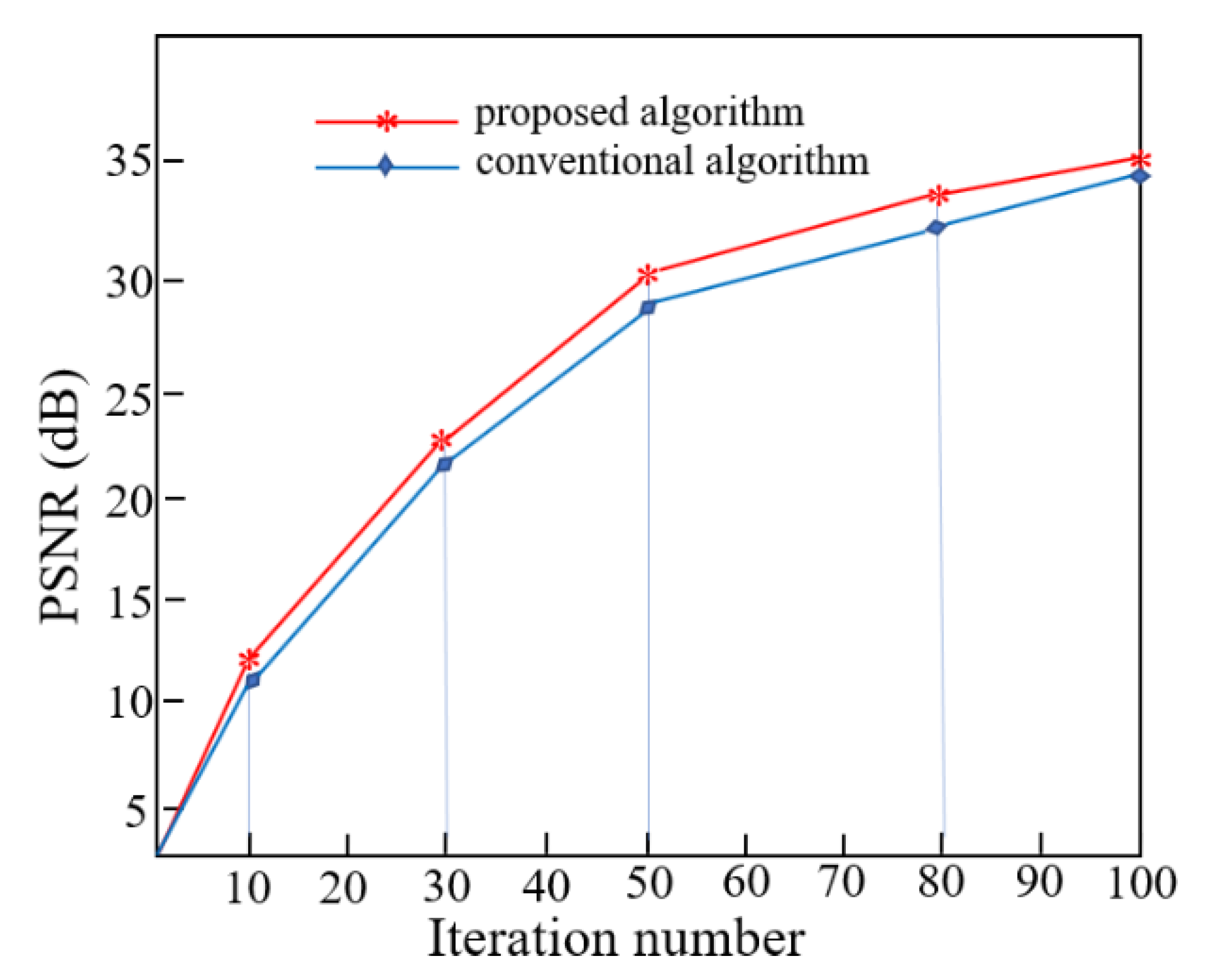
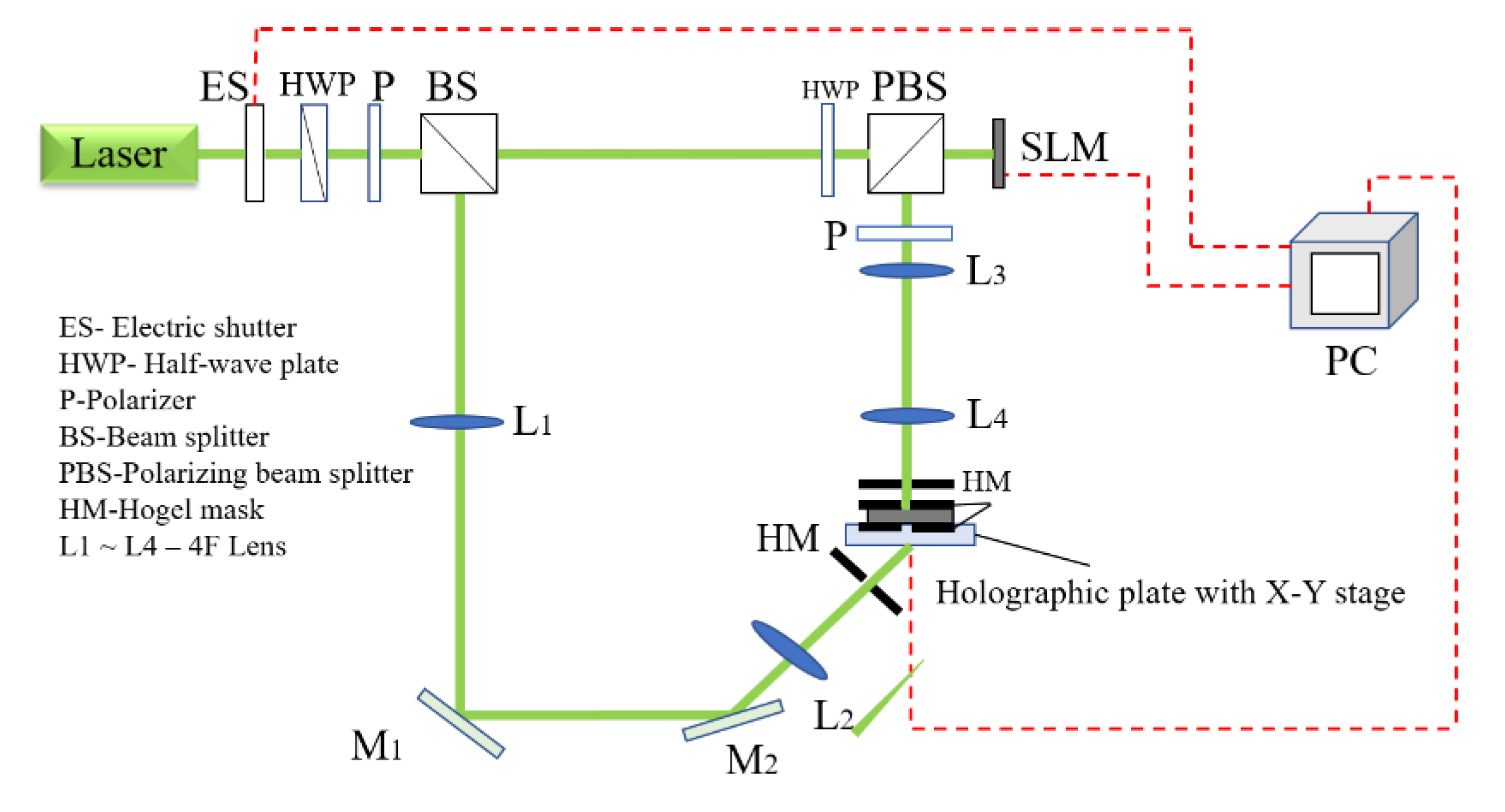
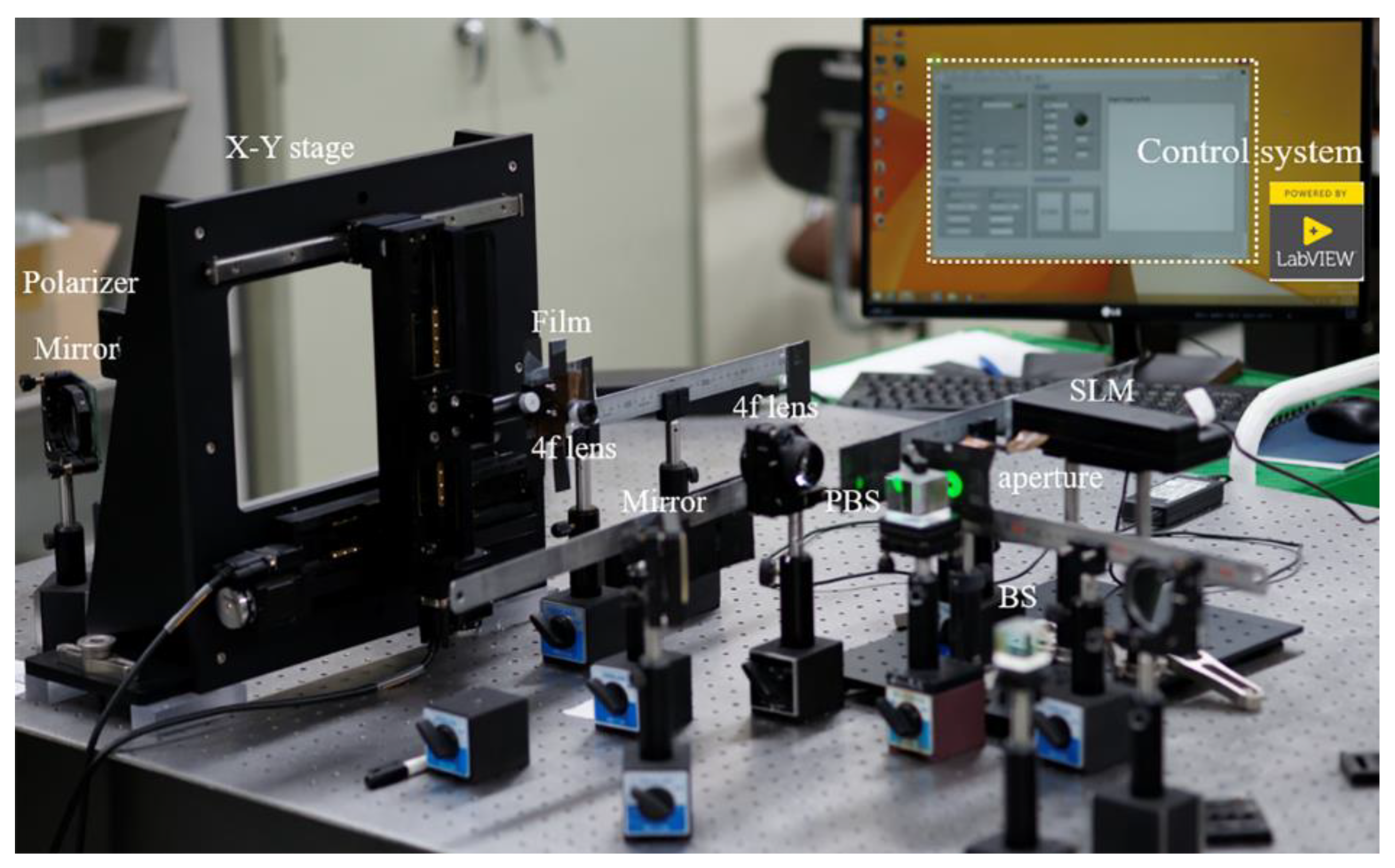
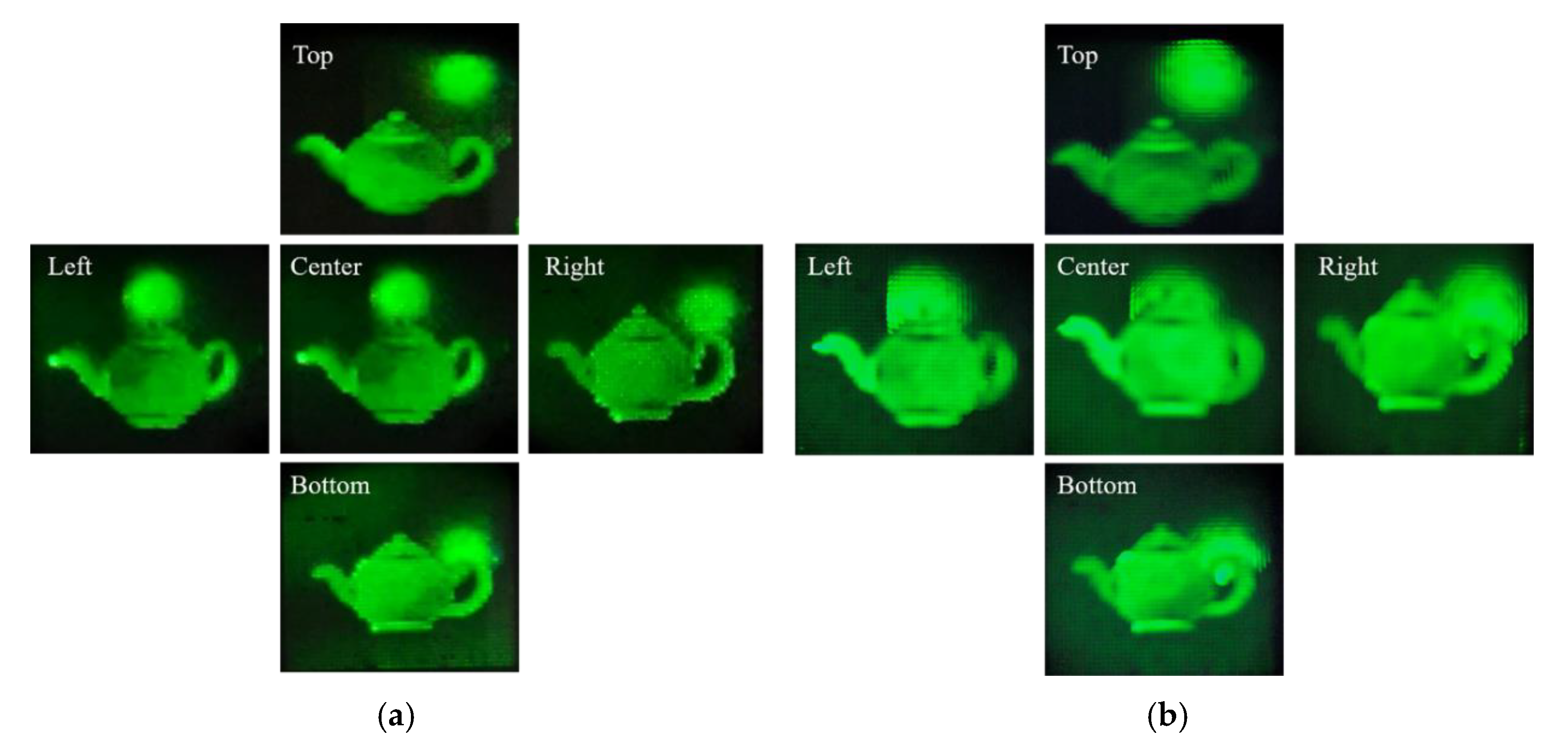
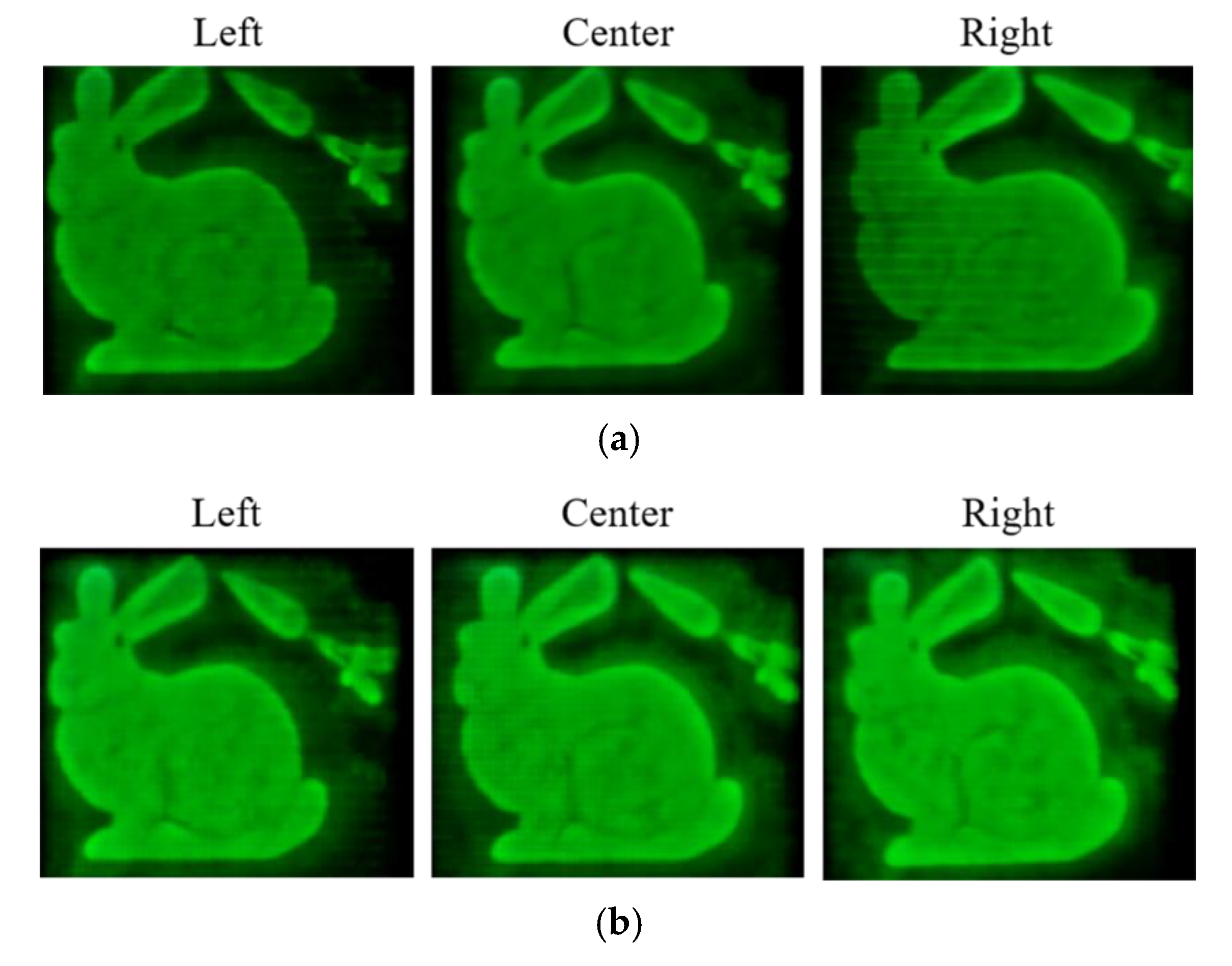
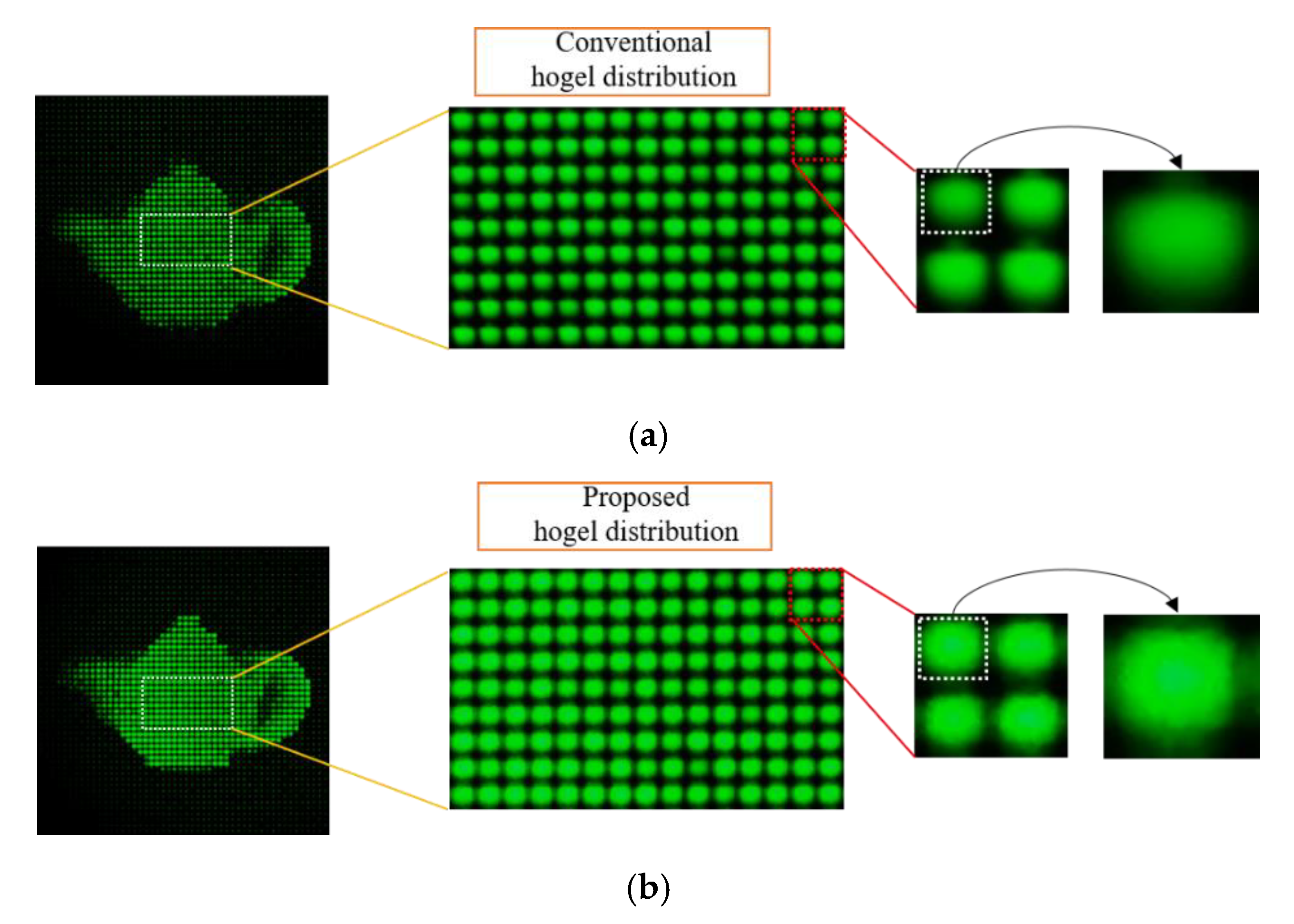
| Methods | Rendering(s) | Hogel Generation(s) | CGH Pattern(s) | IFTA(s) | Recording(s) | Total Time(s) |
|---|---|---|---|---|---|---|
| Conventional method | 1375 | 120 | 857 | 32 | 3000 | 5384 |
| Proposed method | 2291 | 2759 | 756 | 46 | 3000 | 8852 |
Publisher’s Note: MDPI stays neutral with regard to jurisdictional claims in published maps and institutional affiliations. |
© 2020 by the authors. Licensee MDPI, Basel, Switzerland. This article is an open access article distributed under the terms and conditions of the Creative Commons Attribution (CC BY) license (http://creativecommons.org/licenses/by/4.0/).
Share and Cite
Dashdavaa, E.; Khuderchuluun, A.; Wu, H.-Y.; Lim, Y.-T.; Shin, C.-W.; Kang, H.; Jeon, S.-H.; Kim, N. Efficient Hogel-Based Hologram Synthesis Method for Holographic Stereogram Printing. Appl. Sci. 2020, 10, 8088. https://doi.org/10.3390/app10228088
Dashdavaa E, Khuderchuluun A, Wu H-Y, Lim Y-T, Shin C-W, Kang H, Jeon S-H, Kim N. Efficient Hogel-Based Hologram Synthesis Method for Holographic Stereogram Printing. Applied Sciences. 2020; 10(22):8088. https://doi.org/10.3390/app10228088
Chicago/Turabian StyleDashdavaa, Erkhembaatar, Anar Khuderchuluun, Hui-Ying Wu, Young-Tae Lim, Chang-Won Shin, Hoonjong Kang, Seok-Hee Jeon, and Nam Kim. 2020. "Efficient Hogel-Based Hologram Synthesis Method for Holographic Stereogram Printing" Applied Sciences 10, no. 22: 8088. https://doi.org/10.3390/app10228088
APA StyleDashdavaa, E., Khuderchuluun, A., Wu, H.-Y., Lim, Y.-T., Shin, C.-W., Kang, H., Jeon, S.-H., & Kim, N. (2020). Efficient Hogel-Based Hologram Synthesis Method for Holographic Stereogram Printing. Applied Sciences, 10(22), 8088. https://doi.org/10.3390/app10228088








